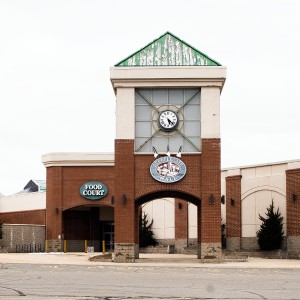A closer look at fire/EMS retention and recruitment in Merrimack County
| Published: 10-04-2023 10:58 AM |
The classic image of a firefighter plucking a kitten out of a tree is no more.
Tasked with responding to a growing number of catastrophic car crashes, deadly overdoses and emergency medical calls and a shrinking number of calls for actual structure fires, the responsibilities of firefighters and emergency medical personnel have changed over time.
At the same time, recruitment of new firefighters has become more difficult in a competitive environment where wages are far higher in larger cities compared to nearby towns and the retention of older fighters remains difficult in an industry where workers can retire before the age of 50. The shortage of firefighters and EMS personnel has continued to affect organizations across the state, regardless of size, to include career, on-call, volunteer and combination departments.
“I have been chief for 24 years, and this is the lowest number of active people we’ve had,” said Dunbarton Fire Chief Jonathan Wiggin. “Everyone likes to blame it on the pandemic, which definitely had an impact on it at the height of COVID, but people joined the department to go to fires. That’s very rare now.”
The needs within local communities have expanded to include emergency medical calls for overdoses and mental health, patient transportation, hazardous material mitigation, technical rescue, fire prevention and disaster response, while responsibilities have evolved to include higher-level advanced care and treatments and higher standards and expectations, according to a report provided to Gov. Chris Sununu in 2022 from the Fire and Emergency Medical Service Ad-Hoc Committee on recruitment and retention.
The 14-member committee, which included Loudon Fire Chief Tom Blanchette, was tasked with defining the problems surrounding recruitment and retention, recommending ways for the state and local municipalities to improve hiring and to recommend short-term strategies to increase the available workforce.
As a result of its research, the committee determined that local departments should develop a plan to recruit more diverse workers, engage in community relationships to develop local programs for youth, develop a social media presence and implement annual training, recruitment and retention plans while the state works to evaluate training standards, programs and requirements for firefighters and EMS personnel, provide state-level funding to subsidize increased training opportunities and develop grants and student loan options for personnel.
In the state of New Hampshire, there are 228 fire departments and 270 EMS units, 195 of which double as fire departments. Within those departments, there are 1,704 full-time career firefighters and 4,256 on-call/volunteer firefighters, according to the committee’s report.
Article continues after...
Yesterday's Most Read Articles
Of those, Merrimack County has 12 volunteer fire departments, two career fire departments in Concord and Hooksett and 13 combination fire departments in addition to one volunteer EMS department, eight career EMS departments and 17 combination EMS departments.
“The problem is that many of us aren’t full-time, and we usually only have one or two people on,” said Boscawen Fire Chief Timothy Kennedy. “We are really hurting, as are most towns.”
Departments used to have higher numbers of potential candidates who competed for openings through the hiring process. Now, almost 70% of rural EMS providers report having difficulty in recruiting and meeting staffing needs, including local towns like Boscawen and Dunbarton.
The cause, they said, has to do with time commitments, training requirements, housing difficulties, work-life balance, starting pay, lack of experience and fewer candidates joining the field who remain wary of prolonged exposure during the COVID-19 pandemic, chiefs across the county said. By the time firefighters and EMS personnel are in their late 20s, they need more financial stability and flexibility for their families.
“We’ve had to increase salaries to get people to come back, but private-sector jobs have surpassed the fire industry’s wages,” said Loudon’s Blanchette. “During COVID, the fire academy wasn’t offering classes; there wasn’t a lot of training going on.”
Additionally, the retirement age for new firefighters was raised, and cancer risks influenced by a hydrocarbon-based environment may have deterred potential recruits concerned about the dangers of the career, while many existing firefighters are leaving their departments for larger ones that have more to offer in terms of salary and professional growth.
In 1989, when Blanchette joined the industry, firefighters were able to retire after 20 years of service, but the state has since changed its requirement to a minimum of 25 years, forcing members to stay on longer. However, through its research, the state ad-hoc committee identified that a critical piece of retaining and recruiting fire and EMS personnel would be reducing the retirement age back to 20 years, Blanchette said.
“Twenty-five years is a long time to be dealing with death and dismemberment and injury and all that,” he continued. “Back then, you could spend 20 years doing this and get out at the age of 45 and still have the physical and mental abilities to work some more and not just sit in a corner and reminisce about everything you’ve seen and done.”
To bring people back to the fire industry and attract more young people, Blanchette found that keeping hot coffee on the pot all day, upgrading the station’s gym and creating a welcoming environment have made people want to join the department and stay. These are just a few of the changes he implemented in his department when he became chief in 2019.
But it’s not enough, and the state has stepped in to do more for its departments.
“Growing up, being part of the fire industry was something I always wanted to do, and being able to go away for an academy every summer for a week as a teenager exposed me to what the fire service has to offer,” said Mike McGinn, who leads the state’s Emergency Services Explorer Training Academy. “As hard as it was given what we had to accomplish during the week, I always left there with new friends, amazing memories and life skills that you can’t really get anywhere else.”
McGinn joined the Explorer’s program when he was 14 and attended during the summers of 1998, 1999 and 2000, where he learned a variety of skills from professionals in the industry on how to perform CPR and other medical tasks; how to use equipment, gear and technology common on ambulances and fire trucks; and the ins and outs of engine company operations like stretching lines, forced entry, search and rescue and ventilation.
At the end of the program when students are eligible to graduate, they are placed in real-life scenarios, like basement and kitchen fires, lock-outs and forced entries and tested on their skills acquired throughout the entirety of the academy.
“During the final part of the week, we’re put into squads and had departments throughout the state bring up fire apparatus, and the staff and instructors set up incidents for them on campus and they were dispatched to different incidents and responded in the trucks to mitigate it,” McGinn said.
Outside of their classes, the students were required to train, march and perform drill exercises in the morning and partake in team-building activities in the afternoon and at night. Specialists were brought in to teach them about PTSD, mental health and how to debrief from a stressful call, how arson dogs are used on the scene of a fire investigation and other related topics like what it was like to live through Sept. 11 as a firefighter.
Most of the cadets who graduated with McGinn are still in the fire industry today, and of the dozens of academies that have graduated students, nearly 80% of them join local departments, he continued.
“I think a lot of kids don’t think about careers in the fire service or law enforcement as much, because it’s not a job that you do for money; it’s something that you have to be passionate about,” McGinn said. “But they’re less interested now in helping people and more worried about cell phones and social media than going to a fire station and learning about a craft or a trade or the lifestyle.”
Through programs like the Explorer’s program and Camp Fully Involved, a young women’s firefighting camp, McGinn and other fire and EMS personnel are hopeful a new generation will gravitate to the industry out of a desire to help others and boost the numbers of emergency responders across the state.
Over the next four years, the state plans to provide departments with additional funding through the American Rescue Plan Act to offer more emergency medical responder training courses at no cost to New Hampshire residents in hopes of bringing in more firefighters, especially in rural parts of the state like Merrimack County, according to the committee report.
With state funding, Concord Fire Chief John Chisholm will implement more training within his department for professional development, succession planning and mentorship programs.
“Right now, one of my goals is to really do what we can in terms of employee engagement and what we found through an internal recruitment and retention committee that we formed within the department,” he said. “With engagement, retention will hopefully naturally follow if they feel engaged and valued.”
Concord’s roster allows for 20 firefighters/EMS personnel. Over the summer it had one vacancy, putting it ahead of other departments. Concord pays more than $50,000 a year to start, not including overtime, which draws applicants from surrounding towns who may be earning less.
“That’s the thing: A lot of the times my gain is my neighbor’s loss, which can make it difficult,” Chisholm said. “We don’t want to be stealing from our nearby communities.”
Additionally, he wants to further align with public and community organizations like the Concord Regional Technical Program at Concord High and introductory programs at local elementary schools. The programs offer ride-alongs, fire safety classes and the opportunity for high school students to test for their EMT certification ahead of graduation. Similarly, NHTI in Concord offers an associate degree in Paramedic Emergency Medicine, which can be a stepping stone to joining a local department.
“We try to take paramedic and EMS students from the area educational programs in hopes that they like what they see here,” Chisholm said.
Dunbarton’s Wiggin works with the Boy Scouts, middle and high school students and local fire explorer programs, a recruitment technique often used to inspire young people to join the fire industry.
Dunbarton’s roster allows for 25 to 35 firefighters/EMS personnel, but they typically have a force of fewer responding to the emergency calls, of which about 75% are medical related.
“These last few years we’ve been in dire straights,” Wiggin said. “I hope that turns around and we can get some more members to join.”


 Adam Montgomery sentenced to minimum 56 years on murder charges in young daughter’s death
Adam Montgomery sentenced to minimum 56 years on murder charges in young daughter’s death Neighboring landowner objection stalls Steeplegate redevelopment approval
Neighboring landowner objection stalls Steeplegate redevelopment approval Following budget cut, Pembroke revisits future of elementary school re-build
Following budget cut, Pembroke revisits future of elementary school re-build Granite Geek: Free government software for taxes – what could go wrong? (Not much, as it turns out)
Granite Geek: Free government software for taxes – what could go wrong? (Not much, as it turns out)
